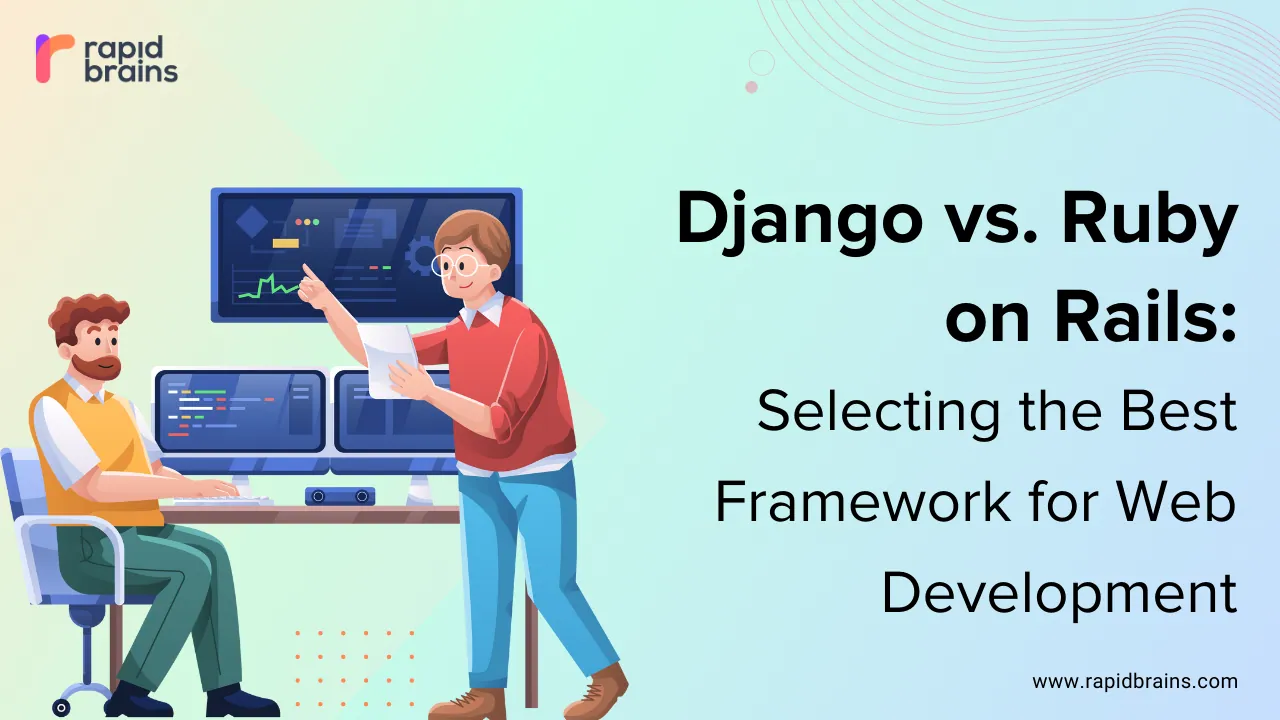
Introduction
In the ever-evolving landscape of web development, choosing the right framework can make all the difference in building successful and robust web applications. Two prominent contenders in this arena are Django and Ruby on Rails (RoR). Both frameworks offer unique features and advantages that cater to different development preferences and project requirements. In this blog post, we’ll dive into the strengths and weaknesses of Django and Ruby on Rails, aiding you in selecting the best framework for your web development journey.
Django: The Pythonic Web Framework
Django, known for its tagline “The Web framework for perfectionists with deadlines,” is a high-level Python framework that emphasizes rapid development, clean and pragmatic design, and a battery-included philosophy. Its powerful Object-Relational Mapping (ORM) system, administrative interface, and comprehensive documentation contribute to its popularity among developers.
Advantages of Django
Rapid Development: Django’s built-in tools and conventions enable developers to create applications quickly. Features like the Django admin interface provide a head start in building administrative components, reducing repetitive tasks.
ORM and Database Abstraction: Django’s ORM simplifies database management by allowing developers to work with Python objects instead of raw SQL. This abstraction promotes code reusability and maintainability.
Security: Django comes with various built-in security mechanisms, helping developers mitigate common web application vulnerabilities like cross-site scripting (XSS) and cross-site request forgery (CSRF).
Community and Documentation: Django boasts a vibrant and active community, which translates to extensive documentation, third-party packages, and support resources.
Ruby on Rails: The Elegant Web Framework
Ruby on Rails, often referred to as RoR or simply Rails, is a web framework built using the Ruby programming language. It follows the principle of “Convention over Configuration” and emphasizes developer productivity, clean code, and maintainability.
Advantages of Ruby on Rails
Developer-Friendly: Rails’ elegant syntax and emphasis on simplicity make it a favourite among developers. Its “magic” conventions reduce the need for explicit configurations, allowing developers to focus on coding.
Conventions and DRY Principle: Rails enforces best practices and follows the “Don’t Repeat Yourself” (DRY) principle, which encourages reusable code and a streamlined development process.
Gems and Plugins: Rails has an extensive ecosystem of “gems” (libraries) that cover a wide range of functionality, from authentication to payment processing. This accelerates development by leveraging existing solutions.
Scaffolding: Rails’ scaffolding feature generates a basic structure for models, views, and controllers, providing developers with a quick starting point.
Django vs. Ruby on Rails: A Comprehensive Comparison
Performance
When it comes to performance, both Django and Ruby on Rails have their strengths. Django is known for its robust architecture that optimizes database queries, resulting in efficient data retrieval. On the other hand, Ruby on Rails employs caching techniques to enhance performance, making it suitable for applications with complex user interactions.
Ease of Use
Django offers a high level of automation and follows the “batteries included” philosophy, providing developers with a wide range of built-in tools. This makes it ideal for rapid development. Ruby on Rails, with its elegant and intuitive code syntax, emphasizes developer happiness and productivity.
Community Support
Django boasts a thriving and inclusive community that contributes to its documentation and third-party packages. This ensures ample support for developers. Ruby on Rails, with its longer history, has a large and active community that continuously updates the framework with new features and security patches.
Scalability
Both frameworks are scalable, but the approach differs. Django’s scalability relies on efficient coding practices and optimization, suitable for moderate traffic applications. Ruby on Rails, with its emphasis on convention over configuration, aids rapid development but requires careful architecture planning for high scalability.
Selecting the Best Framework for Your Project
Choosing between Django and Ruby on Rails depends on various factors
Consider Project Requirements
Assess the complexity and specific needs of your project. Django may be preferable for data-driven applications, while Ruby on Rails suits projects demanding quick development and prototyping.
Development Team Expertise
Evaluate your team’s familiarity with each framework. If your developers are more comfortable with a certain language (Python for Django, Ruby for Rails), that can be a deciding factor.
Future Scalability
Predict the future growth of your application. Django’s efficient optimization can support moderate scaling, while Ruby on Rails requires careful planning for large-scale applications.
Learning Curve
Consider the learning curve for your team. Django’s extensive built-in tools might require more time to learn, whereas Ruby on Rails’ elegant syntax can lead to quicker onboarding.
Conclusion
In the Django vs. Ruby on Rails debate, there’s no one-size-fits-all answer. Both frameworks have their strengths, and the right choice depends on your project’s unique requirements. Assess performance, ease of use, community support, and scalability to make an informed decision that aligns with your development goals.



